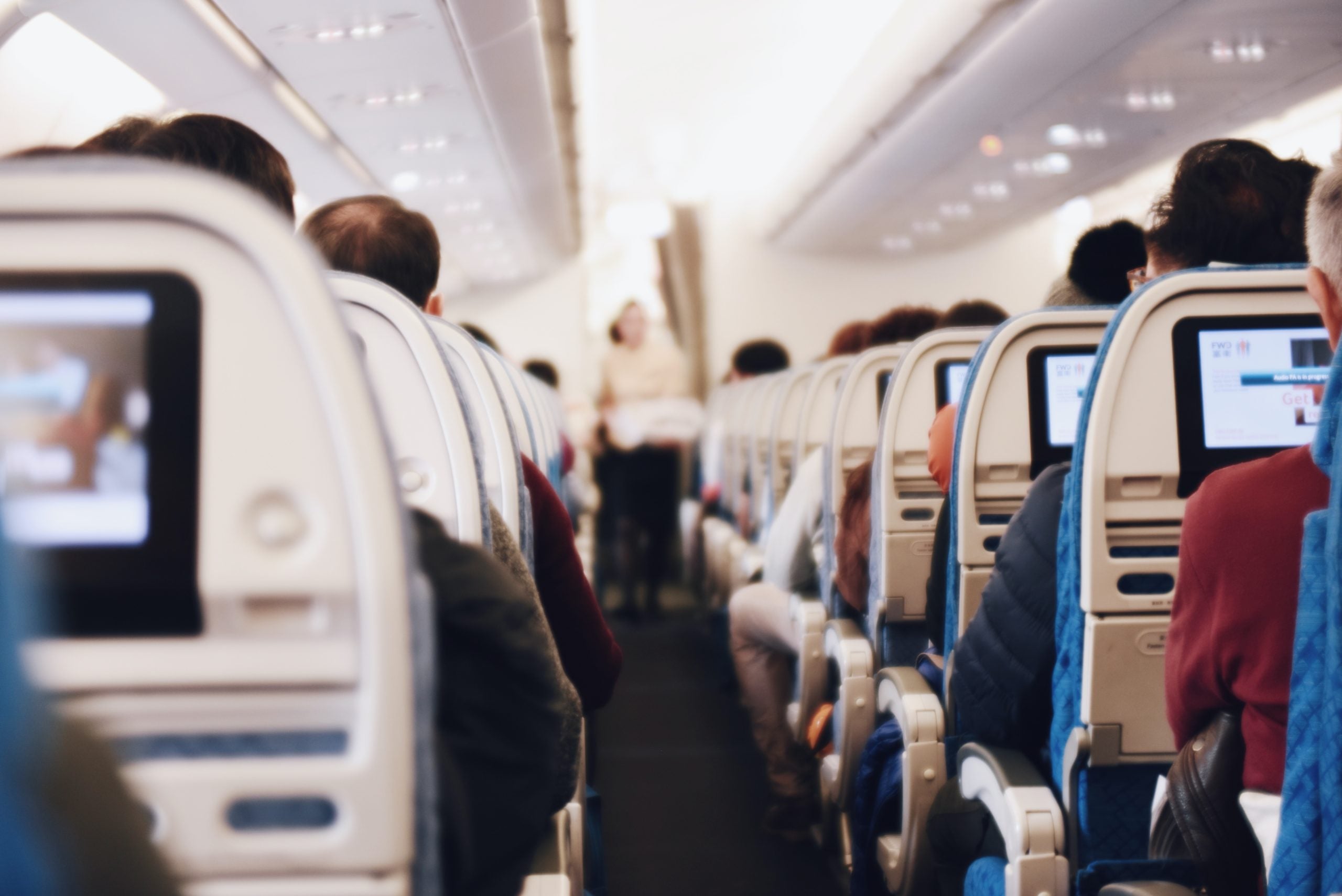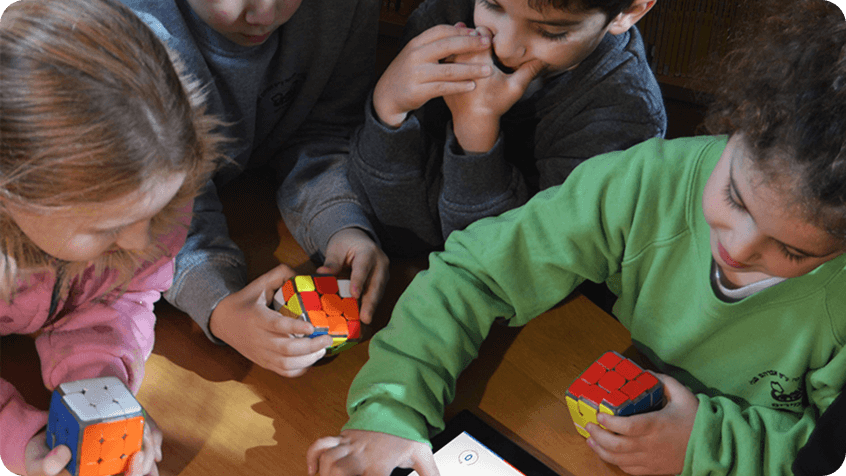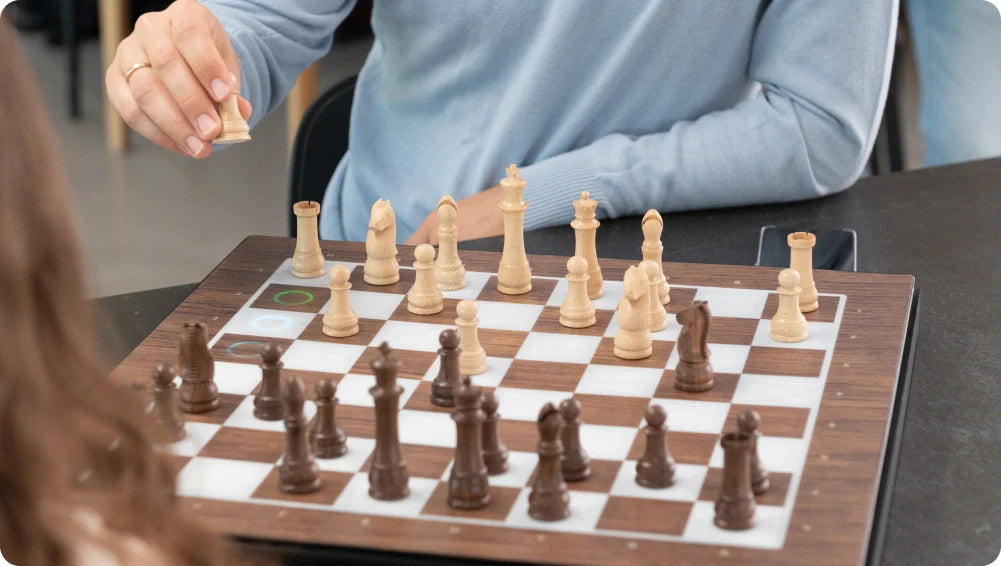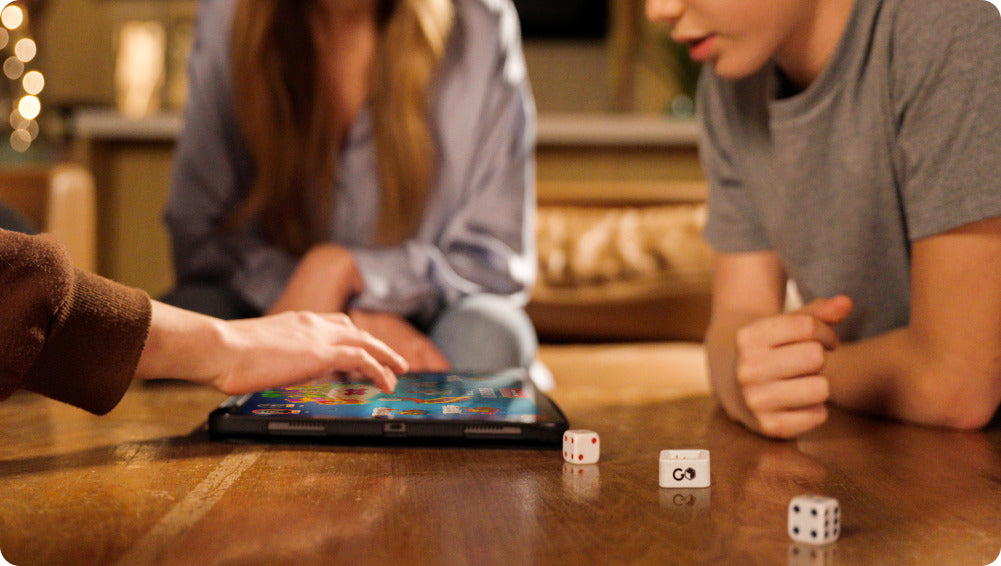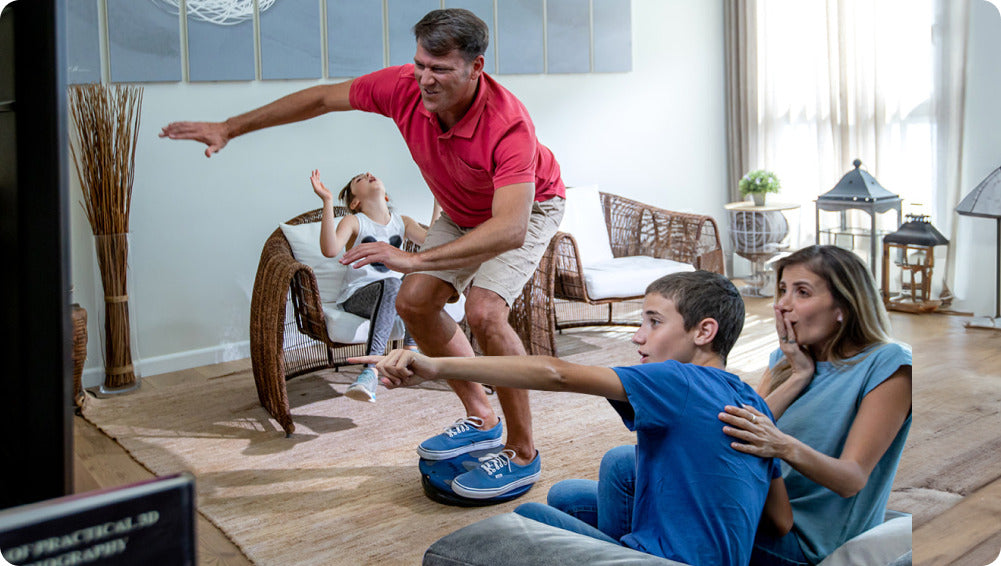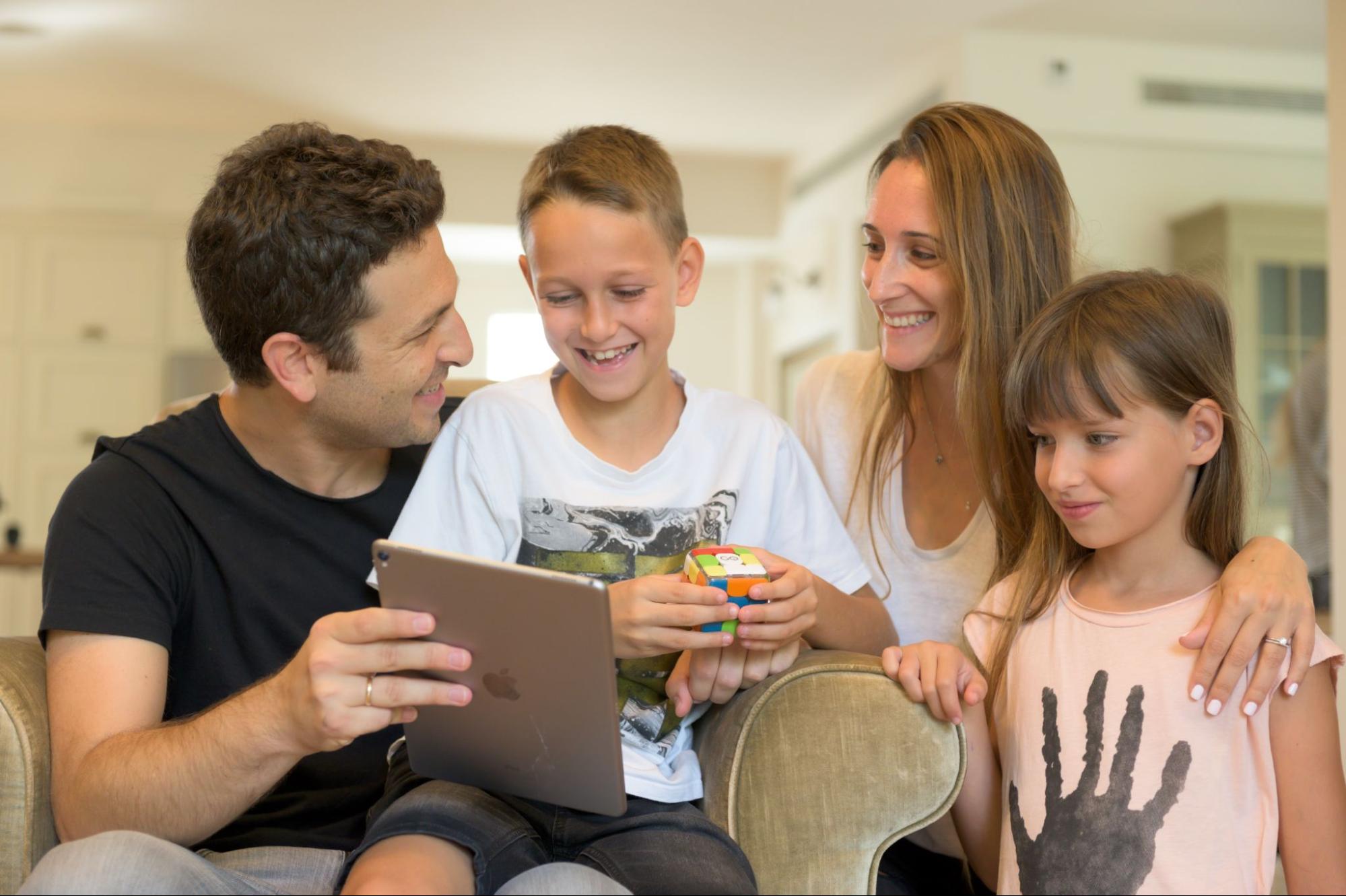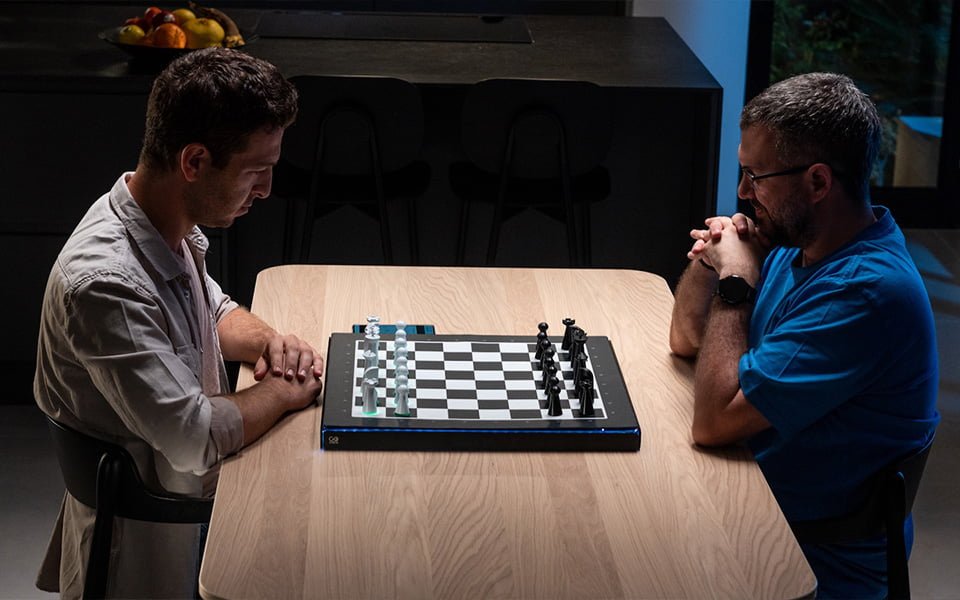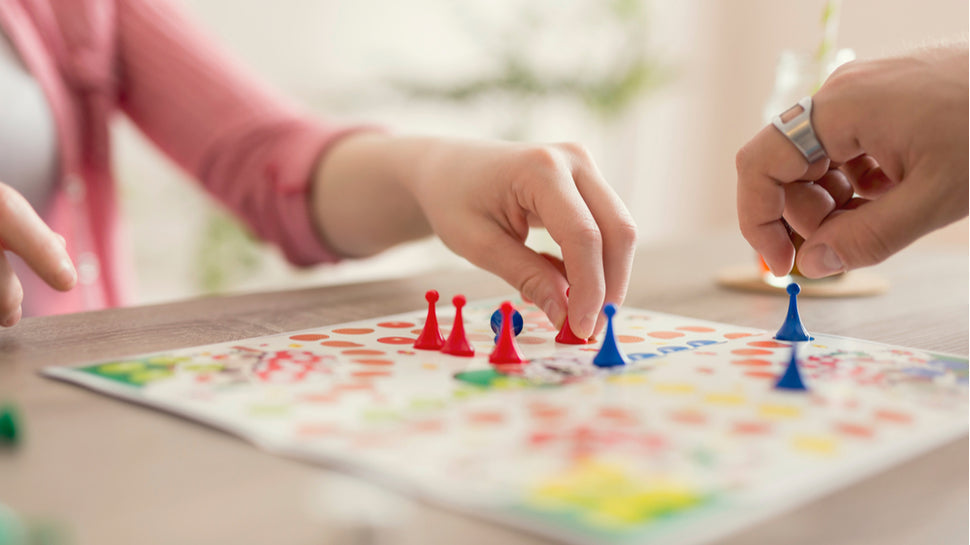Long flight, no Wi-Fi, and your knees have nowhere to move. Sound familiar? When the battery’s low and the seatback screen is doing its best with “Are you still watching?”, most of us start googling things to do on a plane. And when the signal drops completely, you’re looking for games without Wi-Fi, quiet, simple, and perfectly tray-table-sized.
We sometimes forget that the best distractions don’t need Wi-Fi or extra space, just a bit of creativity and the right game or activity. Think smart cubes you can solve between snack breaks, mini card and magnetic board games that won’t spill, and other quick brain challenges. They’re easy to start, easy to pause, and won’t bother your seat neighbor.
That’s exactly what this guide delivers: practical, screen-free ideas you can use from takeoff to landing. Let’s pick what fits your mood and your tray table.
Before We Start: The Reality of Flying Offline
At 35,000 feet, the world slows down in oddly specific ways: the air’s dry, the lights keep changing, there’s barely room to move your elbows, and anything that needs Wi-Fi stops working the moment you take off. That’s why things to do on a plane need a different approach.
Here’s how to make the most of that reality:
- Switch things up. Short attention spans are normal mid-flight. Switch activities every 20 minutes. Play, write, think, rest to keep boredom from setting in.
- Mind your neighbor. Choose activities that don’t shake, roll, or require stretching elbows. You’ll both land happier.
- Keep it compact. If it doesn’t fit on your tray table, it doesn’t belong. Compact games, notebooks, or puzzles are your best travel companions.
- Go battery-free first. You’ll thank yourself when the power outlet doesn’t work or the seat in front refuses to share.
- Think calm, not constant. Quiet focus is what helps hours pass faster.
The categories that follow take these realities into account: hands-on, creative, and brain-boosting ideas you can mix and match. Whether you want simple games to play when bored, calming, creative moments, or small board games, you’ll find the right kind of offline fun for your next flight.
Category A: Smart & Hands-On Games
1. GoCube
If you’ve ever twisted a Rubik’s Cube mid-flight and given up halfway, GoCube is your quiet travel hero. This smart, app-connected cube feels like a regular 2×2 or 3×3 but adds guided lessons, live battles, and progress stats through the GoCube app. Before boarding, connect once to sync your account; after takeoff, Bluetooth is all you need.
GoCube’s Academy teaches you step-by-step how to solve, and once a lesson is preloaded, you can follow it offline in the air. For short breaks between service rounds, the mini-games inside turn finger control into quick challenges you can start and stop anytime. When you’re ready, you can time solves or practice algorithms mid-flight, then join head-to-head matches and leaderboards once you reconnect.
For travel specifically, the appeal is that it’s compact, quiet, and easy to pause for snacks. It’s made to pick up right where you left off: practice one algorithm per flight, play a quick mini-game, or follow a preloaded lesson offline. Even miles above ground, it turns downtime into quality time.
Why it works on planes: compact, quiet turns; easy to pause for snacks; no rolling pieces.
Good for: solo focus, quick “one-algorithm-a-flight” practice.
2. Magnetic Mini Games
A magnetic travel set (chess, checkers, or a compact logic kit) keeps everything in place, so you can play calmly even when the seatbelt is on. Choose a slim clamshell case that opens flat and folds quickly. With fast turns and a clear board state, these make reliable games to play on an airplane with the people in the same row.
Why it works on planes: pieces stay put; setup/pack-down in seconds; whisper-quiet moves.
Good for: parent-kid duos, travel partners who want classic strategy without mess.
3. Compact Card Games
In a cramped cabin, attention comes in short bursts; card games that teach in a minute and play in ten are perfect. Travel decks like Monopoly Deal, Uno (Mini), or SKYJO fit in a pocket, run quietly, and pause instantly when snacks arrive. For a more grown-up touch, tuck a tiny notepad and a single travel die into the box and run simple press-your-luck rounds without any apps.
Why it works on planes: tiny footprint, flexible player count, rounds finish before the aisle gets busy.
Good for: families, friends, or seatmates; party-light strategy that still feels engaging.
Category B: Calm, Creative & Reflective Activities
4. Journaling or Sketching
Planes are oddly great for reflection: no notifications, just engine hum and time to think. Grab a slim notebook and let your mind wander, no big skills needed, just capture trip highlights, write tomorrow’s to-do, or sketch the wing and sky. Stick to a fine-tip pen or pencil to avoid smudges, and keep pages small so you never need more than your tray table.
Why it works on planes: zero setup, zero noise, stops instantly when snacks arrive.
Good for: solo flyers, parents needing a quick reset, teens who like drawing more than talking.
5. Origami & Paper Folding
Folding paper is the perfect fidget: your hands stay busy, your brain relaxes, and the steps are easy to pause. Pack a few pre-cut squares (or fold from any magazine page) and try cranes, stars, or tiny boxes. Use a postcard as a folding surface so creases stay sharp, even in turbulence.
Why it works on planes: silent, compact, and strangely absorbing; no scissors or glue needed.
Good for: parents with kids (shared calm!), anxious flyers who want steady hands..
6. Adult Coloring or Pattern Drawing
Coloring is a low-effort way to switch off busy thoughts without feeling bored. Bring a mini coloring book or two blank index cards and doodle simple patterns (waves, tiles, spirals). Use 3-4 colored pencils to keep it light; avoid markers that bleed.
Why it works on planes: soothing repetition, tiny footprint, easy to stop mid-stroke.
Good for: anyone who wants calm without screens; creative exercise that doesn’t require “being an artist.”
Category C: Brain & Memory Workouts
7. Offline Audiobooks or Podcasts
Eyes tired? Let your ears take over. Download one audiobook or a few podcast episodes before takeoff, travel memoirs, language shows, or science explainers. Close your eyes, breathe, and let time pass while your brain stays engaged.
Why it works on planes: completely hands-free; no screen glare; pairs well with a quick stretch or mindful breathing.
Good for: everyone who wants low-effort activities that still feel enriching; a calm alternative to visual games.
8. Offline Puzzle Apps
A few good puzzles can turn two hours into twenty minutes. Before you board, download Sudoku, crosswords, and logic packs so they run fully offline. Choose bite-size difficulty (easy to medium) to stay relaxed, or stack a few quick wins back-to-back for a confidence boost mid-flight.
Why it works on planes: no internet needed, silent taps, easy to pause when snacks arrive.
Good for: solo flyers who like short challenge loops; parents setting up brain games for kids on a shared device.
9. Learn a Language Offline
Flights are perfect for micro-learning, like 5–10 minutes at a time. Most language apps have an offline mode; preload lessons, phrase decks, and audio. Focus on travel-ready phrases, or run quick vocabulary practice between service rounds. A tiny pocket notebook helps you capture tricky words for later review.
Why it works on planes: productive, quiet, and naturally broken into short sessions.
Good for: adults prepping for a trip, teens building a streak, and parents curating light games to play on a plane without Wi-Fi with their kids (matching words to pictures).
Category D: Sensory & Quiet Reset Tools
10. Pocket Sensory Kit
Cabins are dry, noisy, and cramped; a few tactile items can steady your focus fast. Pack a tiny pouch with a stress ball, roll-on balm, scented hand cream, and one textured fidget. Rotate through touch and scent for a minute each.
Why it works on planes: quiet, no screens, and instantly grounding; scents cue relaxation while tactile focus reduces fidgeting.
Good for: anxious flyers, parents sharing tools with kids, anyone needing a quick reset between activities.
11. Mini Massager or Pressure-Point Roller
Shoulders and neck bear the stress of long sitting. Use a lipstick-sized roller or mini massage stick on traps, forearms, and calves. Pair with 30 seconds of ankle circles to improve circulation.
Why it works on planes: portable, discreet, and effective in tight spaces; relief without leaving your seat.
Good for: desk-bound travelers, long-haul flyers, and parents who carry half the cabin in their backpack.
12. Breathing & Micro-Meditations
Slow breaths lower stress and help time pass more easily. Try 4-4-4-4 box breathing (inhale/hold/exhale/hold), or “extended exhale” (inhale 4, exhale 6–8) for two minutes. Eyes open or closed; no app required.
Why it works on planes: silent, space-free, and works even with announcements and aisle noise.
Good for: anyone who wants calm without gadgets; a perfect habit between activities during the rest of the flight.
Pick-Your-One: How to Choose the Best Activity
Not everyone wants a whole kit. If you’ll bring just one thing, use this quick chooser to find what fits your seat, mood, and energy.
Begin with the basics (the “tray-table test”):
- Space: Does it fit flat on the tray (no sprawl, no rolling pieces)?
- Noise: Will it keep neighbors comfortable (no shuffling, no clatter)?
- Pause-ability: Can you stop mid-move when snacks arrive?
- Power-free: Works even if outlets or batteries fail.
Match your mood:
- Fidgety hands, low noise: a tactile puzzle (e.g., GoCube) or a single compact card game.
- Low energy, tired eyes: one downloaded audiobook/podcast; press play, lean back.
- Anxious or restless: a breathing prompt (box breathing) or a tiny sensory tool (balm/fidget).
- Creative itch: journaling/sketching. One pen, a small notebook.
- Traveling with a seatmate: a mini card game you can learn in a minute.
One-minute prep before boarding:
- Put your pick in the seat pocket (not overhead).
- If it’s digital, open it once on Wi-Fi so it’s ready offline.
- Set a gentle goal: “One chapter,” “Three Rubik’s cube algorithms,” or just “Ten minutes.”
Choose one, keep it simple, and you’ll still turn a long flight into easy, quiet time.
Conclusion
Long flights feel easier when you plan for the limits: little space, low noise, no Wi-Fi. And that’s exactly why this guide focused on quiet, compact, pause-friendly ideas you can actually use.
You’ve now got a simple toolkit: hands-on picks like GoCube for quick focus, creative moments like journaling or sketching, brain boosts like downloaded puzzles or a short language lesson, and small resets such as breathing or a sensory minute.
If you want to bring only one option, choose the activity that matches your mood. With a thoughtful pick or two, these things to do on a plane become simple, calm habits, and they turn long hours into an easy time. You’ll land feeling occupied, not overwhelmed; relaxed, not restless.



